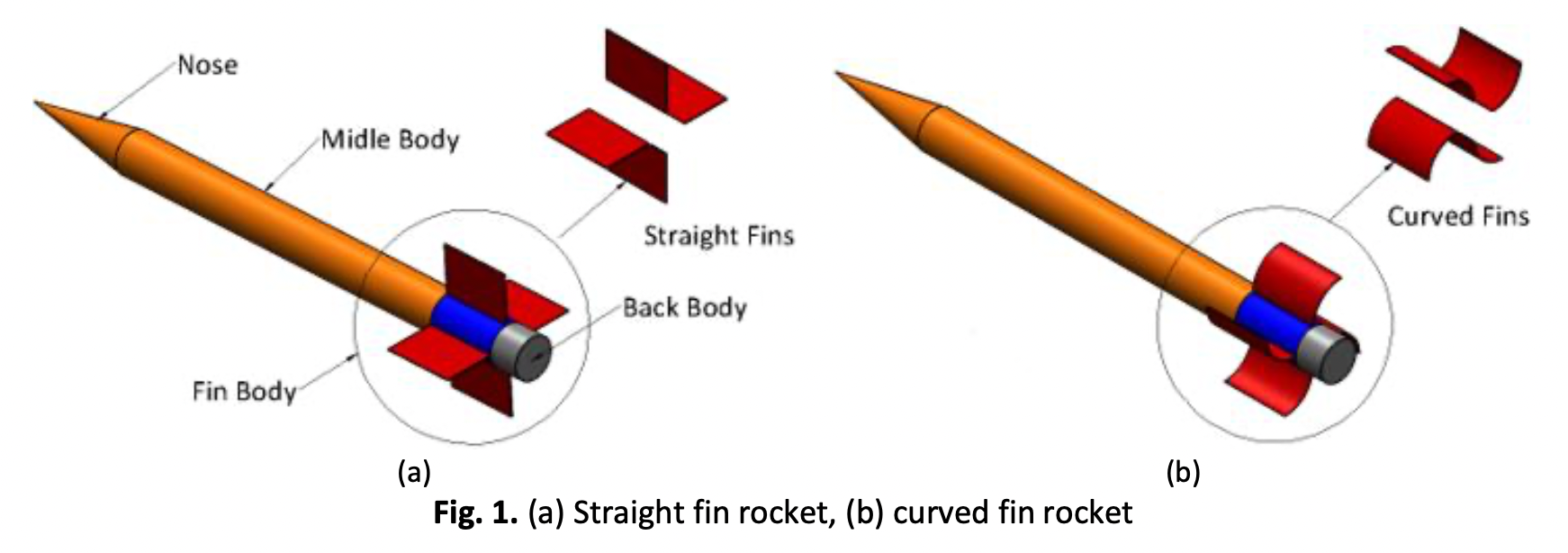A Comparative Analysis of Aerodynamic Performance: Straight Fin and Curved Fin Rockets using Computational Fluid Dynamics (CFD)
DOI:
https://doi.org/10.37934/arfmts.115.1.118Keywords:
Aerodynamic, rocket, rocket fin, straight fin, curved finAbstract
This investigation seeks to discern the aerodynamic differentials between rockets featuring straight fins and those with curved fins, focusing on the drag coefficient (cd), lift coefficient (cl), and moment coefficient (cm). Employing the computational fluid dynamics (CFD) methodology within ANSYS Fluent software, the research endeavors to provide comprehensive insights. The rockets under scrutiny share a common cylindrical body configuration, boasting a 70 mm diameter, a conical nose, and four symmetrically positioned fins along the lower body. The CFD analyses encompass subsonic Mach 0.6 and supersonic Mach 1.2 scenarios, with the angle of attack systematically varying from 0° to 25° at 5° intervals for each velocity setting. The outcomes of the simulations reveal notable trends: both cd and cl exhibit an upward trajectory, while cm experiences a decrement with escalating angles of attack and velocities. The culmination of Ansys CFD simulations for both rocket configurations unequivocally indicates superior flight performance for the straight fin rocket. This discernment is grounded in the observed amplification of drag and lift coefficients, coupled with the concomitant reduction in the moment coefficient, thus elucidating the nuanced aerodynamic distinctions between straight fin and curved fin rockets across varying flight conditions.
Downloads

































